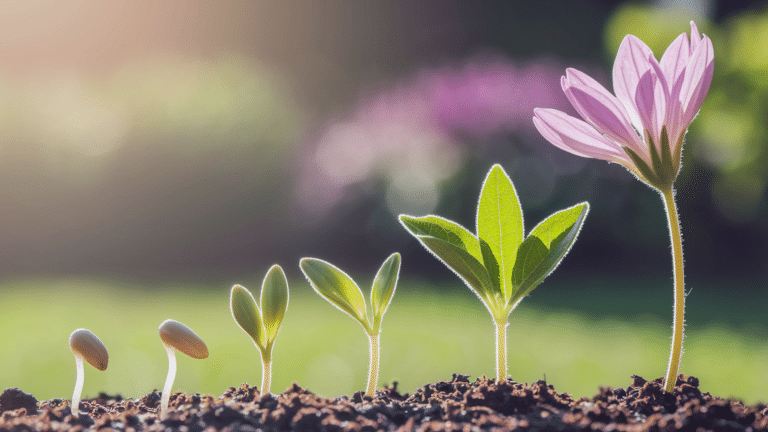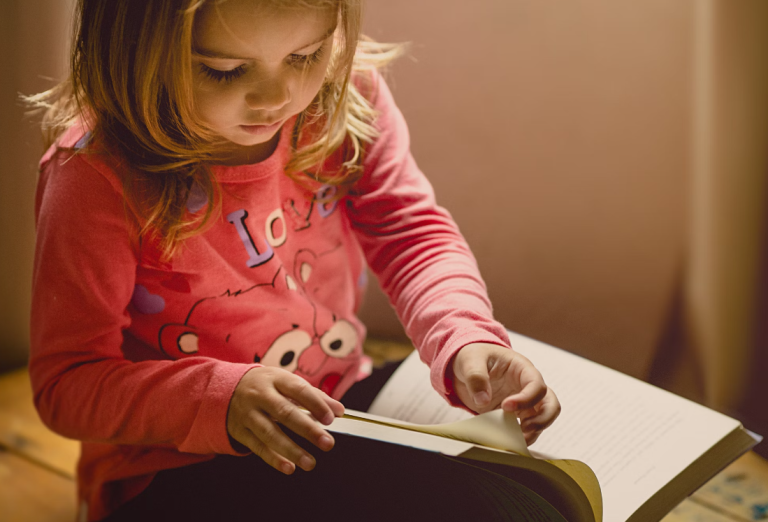Have you ever wondered how a tiny seed grows into the vegetables on your plate or the beautiful flowers in your garden?
The plant life cycle is a fascinating process that begins with a small seed and ends with the creation of new life.
In this blog, you will take a fun and simple path through the four stages of the plant life cycle: seed, germination, growth, and reproduction.
With easy-to-understand explanations and engaging activities, we’ll help kids understand the magic behind how plants grow and why it’s important to our world.
What is the Plant Life Cycle?
The plant life cycle encompasses all the stages plants undergo from germination to reproduction and the production of new plants.
While animals move around, plants remain in place and follow specific growth patterns throughout their lives.
Every flowering plant goes through four main phases: seed, germination, growth, and reproduction. These phases work together to help plants survive and produce future generations.
Some plants complete this cycle within months, while others take many years; however, the pattern remains consistent across species.
When children learn about these plant phases, they begin to see the order in nature.
This knowledge connects to other natural cycles that they may already understand, such as the changing seasons or water moving through the environment.
Stage 1: Seed
The journey of every plant begins with a small but mighty seed:
- Each seed contains an embryo plant and food reserves for initial growth.
- Seeds range from tiny poppy seeds to coconuts the size of human heads.
- The tough outer coating shields the embryo until growth conditions are suitable.
- Seeds can stay inactive for extended periods, waiting for proper water, temperature, and light.
- One sunflower seed holds all the genetic information to grow and make hundreds of new seeds.
Fun Fact: Seeds are mobile travelers! They move to new places in different ways: dandelion seeds float on the wind with their light parachutes, burdock seeds stick to animal fur with tiny hooks.
Berries get eaten by birds who drop the seeds in their droppings far away.
Stage 2: Germination
Germination marks the exciting moment when a dormant seed transforms into a growing plant:
- Seeds soak up water, softening their coat and starting internal chemical changes.
- A tiny root grows down for nutrients and support, while a shoot grows up toward light.
- Seeds need three key things to sprout: water, proper temperature, and oxygen from soil.
- Some seeds need light to grow; others need dark, each suited to its natural setting.
- Seedlings use stored food until first leaves form and can make food from sunlight.
Activity Idea: Children can watch germination happen by placing bean seeds between wet paper towels in a clear plastic bag. Hang the bag in a warm place and check daily.
Within 3-5 days, kids will see the seeds crack open and tiny roots emerge. This simple experiment lets them witness the beginning of plant life right before their eyes!
Stage 3: Growth
After germination, the young plant enters a period of rapid development:
- The sprout gets stronger as roots grow deeper, securing the plant and taking in water and nutrients.
- The stem grows taller with new leaves forming to collect sunlight.
- Roots pull water and minerals from soil like straws.
- The stem moves these resources up to leaves.
- Leaves work as food makers, using sunlight to change water and carbon dioxide into food.
- The plant forms buds that will become flowers, starting the next life cycle phase.
Fun Fact: Plants make their food through photosynthesis! The green color in leaves comes from chlorophyll, which captures sunlight energy.
This energy helps turn water and carbon dioxide into sugar (food) and oxygen. This process is so important that it produces most of the oxygen we breathe!
Stage 4: Reproduction
The reproduction stage allows mature plants to create new seeds and continue the plant cycle:
- Most plants begin reproduction with flowers, which hold the plant’s reproductive parts.
- Flowers exchange pollen (containing male cells) with other flowers to make seeds.
- Bees, butterflies, and birds carry pollen between flowers, while some plants use wind or water.
- After pollen transfer, the fertilized flowers grow into fruits with seeds.
- Seeds spread when fruits drop, seeds blow away, or animals eat fruits and pass seeds elsewhere.
- Each seed can grow into a new plant, finishing and beginning the cycle again.
Fun Fact: Flowers have special features to attract their pollinators! Some have bright colors that bees can see from far away. Others bloom at night with strong scents to attract moths. Some orchids even look and smell like female insects to trick male insects into visiting!
Why is the Plant Life Cycle Important?
Understanding how plants grow and reproduce connects us to the natural world in many ways:
Food Source: The plant life cycle forms the basis of most food chains. Plants feed humans and animals directly, or become food for smaller creatures that larger animals eat.
Air Quality: Plants clean our air by taking in carbon dioxide and giving off oxygen through photosynthesis. One large tree can provide enough oxygen for four people daily.
Soil Protection: Plant roots hold soil in place, stopping erosion during heavy rains.
Education Benefits: When children learn about the plant life cycle, they understand how food grows, connecting vegetables on their plate to the seeds and plants that produced them.
Life Skills: Studying plant cycles teaches children patience and responsibility as they watch how plants need time and good conditions to grow through each stage.
By learning about plant life cycles, we gain a deeper respect for the natural systems that support all life on Earth.
Fun Activities to Learn About the Plant Life Cycle
Bringing the plant life cycle to life through hands-on activities helps children connect with these concepts in meaningful ways. Here are simple projects that make learning about plants fun and memorable:
Paper Plant Life Cycle Wheel
Cut two circles from cardboard. Cut a window in the top circle and attach it to the bottom circle with a brad fastener.
Draw the four stages of the plant life cycle on the bottom circle so each stage appears in the window as the wheel turns.
Seed Collection
Go for a nature walk to collect different seeds. Sort them by size, color, or mode of transportation. Glue them to paper to create a seed identification chart.
Bean in a Jar
Place a few beans between the glass jar and a wet paper towel. Children can watch the entire germination process and root development, which is usually hidden underground.
Plant Journal
Have kids plant a fast-growing seed, such as a sunflower, and keep a weekly journal with drawings and measurements as it progresses through each stage of its life cycle.
For more exploration, these books are perfect for young plant scientists: From Seed to Plant by Gail Gibbons, The Tiny Seed by Eric Carle, and How a Seed Grows by Helene J. Jordan.
Conclusion
The plant life cycle is truly an amazing process, turning a tiny seed into a flourishing plant that plays a vital role in our ecosystem.
By learning about the four key stages: seed, germination, growth, and reproduction, children gain a deeper understanding of nature and its incredible processes.
Next time you’re outside, take a moment to spot seeds sprouting, seedlings growing, or flowers preparing to create new seeds. These observations bring the plant cycle to life!
We encourage you to start a plant-growing experience with your child, allowing them to witness the magic firsthand..
Share your experiences and plant-growing stories in the comments below.

















